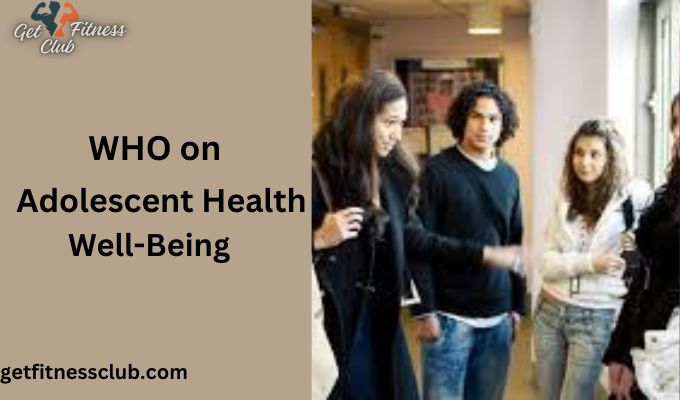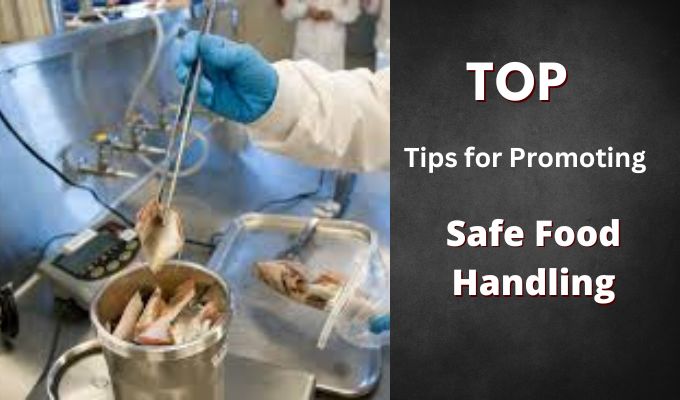Embarking on the journey of adolescence can be a rollercoaster, both for teens and those guiding them. Brace yourselves for a positive shift in this adventure because the World Health Organization (WHO) has just unveiled its treasure trove of wisdom! In a groundbreaking move, WHO on Adolescent Health & Well-Being, ushering in a wave of insights that will reshape the way we approach the crucial years of adolescence. This comprehensive update is not just a guide; it’s a roadmap to navigate the challenges and cherish the triumphs of teenage years, ensuring a healthier and happier path forward for our youth.

Introduction:
Embarking on a pivotal stride towards fostering healthier adolescent lives, the World Health Organization (WHO) has recently unwrapped a beacon of guidance. This beacon comes in the form of updated recommendations on adolescent health and well-being, a comprehensive effort to address the unique challenges and opportunities of this critical life stage.
WHO’s Initiatives for Adolescent Health:
WHO has long been at the forefront of global health initiatives, and its commitment to adolescents is unwavering. This guide delves into the organization’s ongoing efforts and initiatives specifically tailored to enhance the well-being of adolescents worldwide.
The Need for Updated Guidance:
Understanding the evolving landscape of adolescent health is crucial. This section explores the pressing need for updated guidance, considering the ever-changing societal, cultural, and medical contexts shaping the lives of young individuals.

Development Process of the Updated Guidelines:
Unraveling the intricate process behind crafting these guidelines, this segment sheds light on the collaborative efforts, research, and expert insights that went into creating a holistic framework for adolescent health.
Key Focus Areas:
Navigate through the core domains that WHO’s updated guidance zeroes in on. From reproductive health to fostering inclusivity in healthcare, each focus area is a strategic piece in the puzzle of ensuring comprehensive well-being for adolescents.
Reproductive Health:
A dedicated exploration into the updated guidelines pertaining to reproductive health, acknowledging the specific needs, challenges, and rights of adolescents in this crucial aspect of their development.
Inclusivity in Healthcare:
Dive into the initiatives aimed at fostering an inclusive healthcare environment, ensuring that adolescents from all backgrounds receive equitable access to quality healthcare services.
Monitoring and Evaluation:
Understanding the effectiveness of any guidance is paramount. Explore the monitoring and evaluation mechanisms embedded in WHO’s approach to continuously assess and enhance the impact of these guidelines.
Addressing Stigma and Cultural Sensitivity:
Delve into the ways in which WHO’s guidance aims to break down societal stigmas surrounding adolescent health while maintaining cultural sensitivity, acknowledging the diverse perspectives that shape these experiences.
Future Prospects:
Anticipate the trajectory of adolescent health as influenced by these updated guidelines. This section envisions the potential impact and positive changes that may unfold in the future.

Conclusion:
Wrap up the guide by summarizing the significance of WHO’s updated guidance on adolescent health and well-being. Emphasize the transformative potential it holds for the lives of millions of young individuals globally.
FAQS:
Q1:Which organization developed an adolescent well-being framework?
The organization that developed an adolescent well-being framework is the World Health Organization (WHO).
Q2:What is the age of adolescence as per WHO guidelines?
According to WHO guidelines, adolescence is defined as the period between 10 and 19 years of age.
Q3:What is the Adolescent Health and Development program?
The Adolescent Health and Development program is an initiative by the World Health Organization aimed at addressing the unique health needs and challenges faced by adolescents. It encompasses a range of strategies and interventions to promote the well-being of adolescents, including physical and mental health, social development, and the acquisition of life skills.
Q4:What is adolescence according to the World Health Organization?
According to the World Health Organization, adolescence is a crucial phase of development marked by rapid physical, psychological, and social changes. It is a transitional period between childhood and adulthood, characterized by increased independence, exploration, and identity formation. WHO recognizes the importance of addressing the specific health needs of adolescents to ensure a healthy and productive transition into adulthood.


